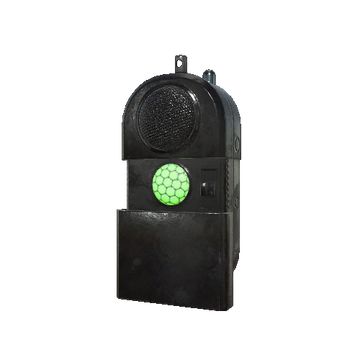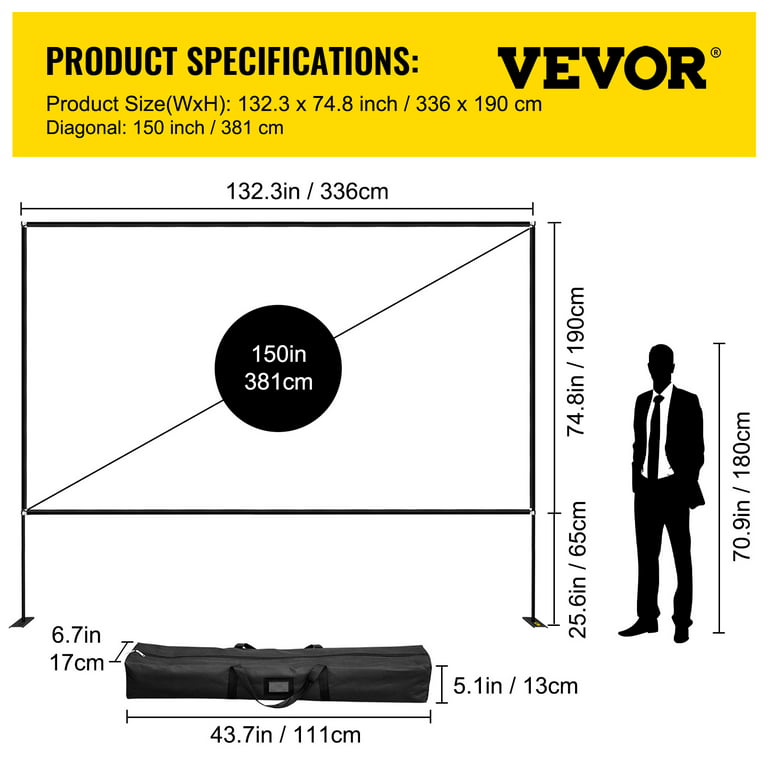Understanding the Importance of Native Resolution for Projectors
Introduction
Projectors have become a staple equipment in our lives, be it in classrooms, corporate conference rooms, or home theaters, offering a larger-than-life experience. One crucial aspect that plays into the overall viewing experience is the 'native resolution' of a projector. In this comprehensive guide, we will explore what projector resolution means, dive deep into understanding the concept of 'native resolution', why it is so vital, and how to choose an ideal native resolution. We will also unveil some of the top projectors with optimal native resolutions in the market.
What is the Concept of Projector Resolution?
Projector resolution is an integral aspect of understanding the efficiency and capability of a projector. Simply put, it's all about the level of detail and sharpness a projector can reproduce. Let's breakdown the concept:
- Measurement: The projector resolution is determined by the number of pixels, both horizontally and vertically. For example, a resolution specification of 1920x1080 indicates 1920 horizontal and 1080 vertical pixels.
- Pixel Density: Each 'pixel' is a minute section of the complete picture, and the sum of pixels customized by colors creates the final image. The more pixels there are, the denser is the pixel concentration, leading to a sharper and clearer picture.
- Impact on Image Quality: A higher resolution means a higher pixel count, which results in finer detail in the image. It directly contributes to the quality of the image, providing crispness, and clarity.
Projector resolution, therefore, is a vital factor determining the overall viewing experience, with the highest resolution offering the sharpest images. Always remember, the resolution of a projector goes hand in hand with the detail and sharpness of the image it produces.
What is Native Resolution in the Context of Projectors?
In the context of projectors, 'Native Resolution' plays a key role. To understand this term better, let's break it down:
- Definition: Native resolution refers to the highest, actual and inherent resolution a projector can physically achieve. It portrays the clear division of the image displayed into rows and columns of pixels delivered by the projector's DLP (Digital Light Processing) chip or the LCD (Liquid Crystal Display).
- Format: The native resolution is denoted in a format, for example, 1280x720. Here, '1280' represents the count of physical columns, while '720' depicts the number of pixel rows the projector can dispense.
- Constraint: A projector’s native resolution is a predetermined, fixed attribute—it cannot be changed, meaning the projector can only generate visuals utilizing the fixed pixel count.
- Display: When the projector displays an image or video, it uses the native resolution pixels to project the image. If a projector has a native resolution of 1280x720, it will use precisely 1280 columns and 720 rows of pixels to deliver the visual output.
This intrinsic bit of knowledge plays a crucial role in determining a projector’s potential to present high-quality, sharp and detailed imagery.
Why is Good Native Resolution Crucial for Projectors?
Opting for a projector with a superior native resolution significantly improves the visual impact and quality. An understanding of why a good native resolution is crucial for a projector can be broken down into the following points:
- Superior Image Quality: A projector with a high native resolution guarantees an enhanced image quality. With an ideal native resolution, the projector utilizes every single pixel of the input signal, ensuring maximum clarity and detail. Simply put, a higher native resolution ensures less pixel wastage, thus offering a sharp and clear image.
- Compatibility with Prevalent Formats: A native resolution that aligns with commonly used formats gives a much smoother viewing experience. For instance, a native resolution of 1080p pairs perfectly with most Blu-ray movies and full HD television broadcasts, enabling the user to enjoy the content without any issues related to format compatibility.
- Impacting Aspect Ratio and Screen Size: The native resolution of a projector has a significant influence on the aspect ratio and screen size. A high native resolution ensures the screen size can be increased without compromising the image quality. This factor is particularly crucial in varied settings such as home theaters, gaming sessions, or large presentations where screen size matters.
- Specified Use: If you're using the projector for specific uses like gaming, watching movies, or business presentations, the native resolution can dramatically impact the overall visual experience. Higher resolutions like 720p or 1080p render excellent picture quality for gaming and movies, while for business settings or casual uses, even lower resolutions can serve the purpose efficiently.
In conclusion, making a wise decision about the projector's native resolution results in an optimal balance between detail, compatibility, aspect ratio, and specified use. Every aforementioned factor distinctly points out why an optimal native resolution holds a prime position when choosing the best of projectors.
How to Choose the Right Native Resolution for Various Scenarios?
Choosing the correct native resolution is crucial and primarily depends on the specifics of your requirement and usage. Every situation demands a unique consideration for the screen resolution of the projector. Here is a guideline to help you decide:
Large Venue Presentations
- For extensive conference rooms or auditoriums where large-scale display is required, it is advisable to opt for a higher resolution.
- Optimal Choice: Projectors with a native resolution of 1080p or 4K.
Home Theatre and Gaming
- High definition movies and gaming pursuit require eminent picture quality even on a broader screen.
- Optimal Choice: Projectors offering 720p or 1080p native resolution.
Small Meetings and Casual Use
- For regular usage or small-scale business meeting, a projector with less resolution works well.
- Optimal Choice: Projectors featuring lower resolutions like SVGA (800 x 600 pixels) or 480p.
Keep in mind that the ideal native resolution should be in line with the resolution of the most frequently used input source to ensure optimum performance. Always remember, a higher resolution doesn't always mean better quality if your input source is not of equal or higher resolution.
Quick Stats:
- Full HD (1080p) Native Resolution: Recommended for usage scenarios including home theaters, gaming setups.
- 4K Native Resolution: Best suited for large auditoriums, conference rooms, or high-definition movie experiences.
- SVGA (800 x 600 pixels) or 480p: A suitable choice for casual use or small business meetings.
By adhering to these guidelines, you can significantly enhance your projector-based visual experiences. Choose wisely and enjoy the perfect blend of technology, clarity, and entertainment.
Which are the Market's Best Projectors with Optimal Native Resolutions?
Choosing a projector with an optimal native resolution can significantly enhance your visual experience, be it for work or entertainment. Different brands are leading the market today, offering a range of projectors with high native resolutions. Here are some of the best picks:
1. Epson Home Cinema 4010 4K PRO-UHD Projector
- Native Resolution: 3840 x 2160
- Key Feature: Offers exceptional color accuracy and image detail, thereby creating an immersive home theatre experience.
2. BenQ TK800M 4K UHD Projector

- Native Resolution: 3840 x 2160
- Key Feature: Its unique sport mode delivers realistic skin tones and an ultra-saturated color palette, making it an excellent choice for animated movies and sports events at home.
3. Optoma W316ST WXGA Short Throw Projector
- Native Resolution: 1280 x 800
- Key Feature: Its short-throw lens ensures sharp and clear presentations perfect for businesses and educational institutions.

These projectors vary in terms of their native resolution, catering to different user needs - from conference room presentations to cozy family movie nights at home. Always remember, a high native resolution directly correlates with the projection quality. The best projector should deliver crisp, vibrant imagery, achieving a balance of the pitch-perfect resolution, room size, and viewer distance. Most importantly, the purpose of the device should guide your final decision. Make sure to align your most frequently projected content with the projector's native resolution for the best results.
Conclusion
Understanding the significance of a projector's native resolution is crucial for an optimal viewing experience. It aids in selecting the right projector based on your unique requirements, ensuring a seamless blending of technology and entertainment. As a rule of thumb, always aim for a native resolution that complements your most frequently projected source materials.
Related FAQs about what is a good native resolution for a projector
What are the differences between native resolution and maximum resolution?
Native resolution refers to the maximum number of pixels a projector can physically display, a fixed attribute determined by the hardware. Maximum resolution, on the other hand, refers to the highest resolution signal a projector can handle and does not guarantee the same level of image clarity as native resolution as it often involves stretching or compressing the image.
Does a higher native resolution always mean a better-quality image?
Not necessarily. A higher native resolution only provides a better-quality image if the viewed content matches or exceeds the projector's resolution. If not, the projector may have to downsize the content, compromising image quality. Hence, matching content and projector's resolution is important for optimal viewing experiences.
How does native resolution impact the lifespan of a projector?
Native resolution doesn't directly affect the lifespan of a projector. It's a fixed attribute, determined by the number of pixels the projector’s display hardware can support. Factors that influence lifespan include maintenance, usage patterns, and the durability of components such as the lamp or laser light source.







